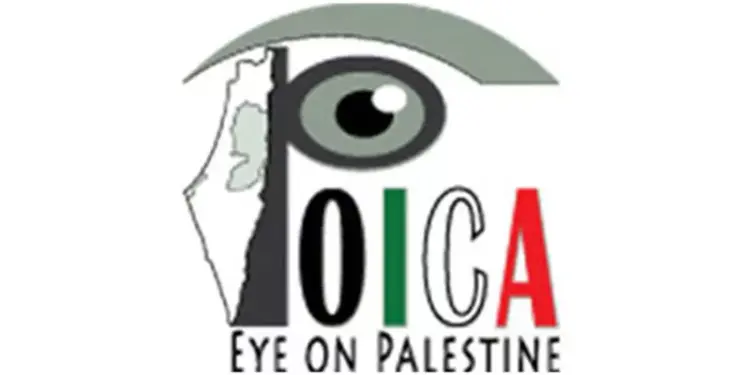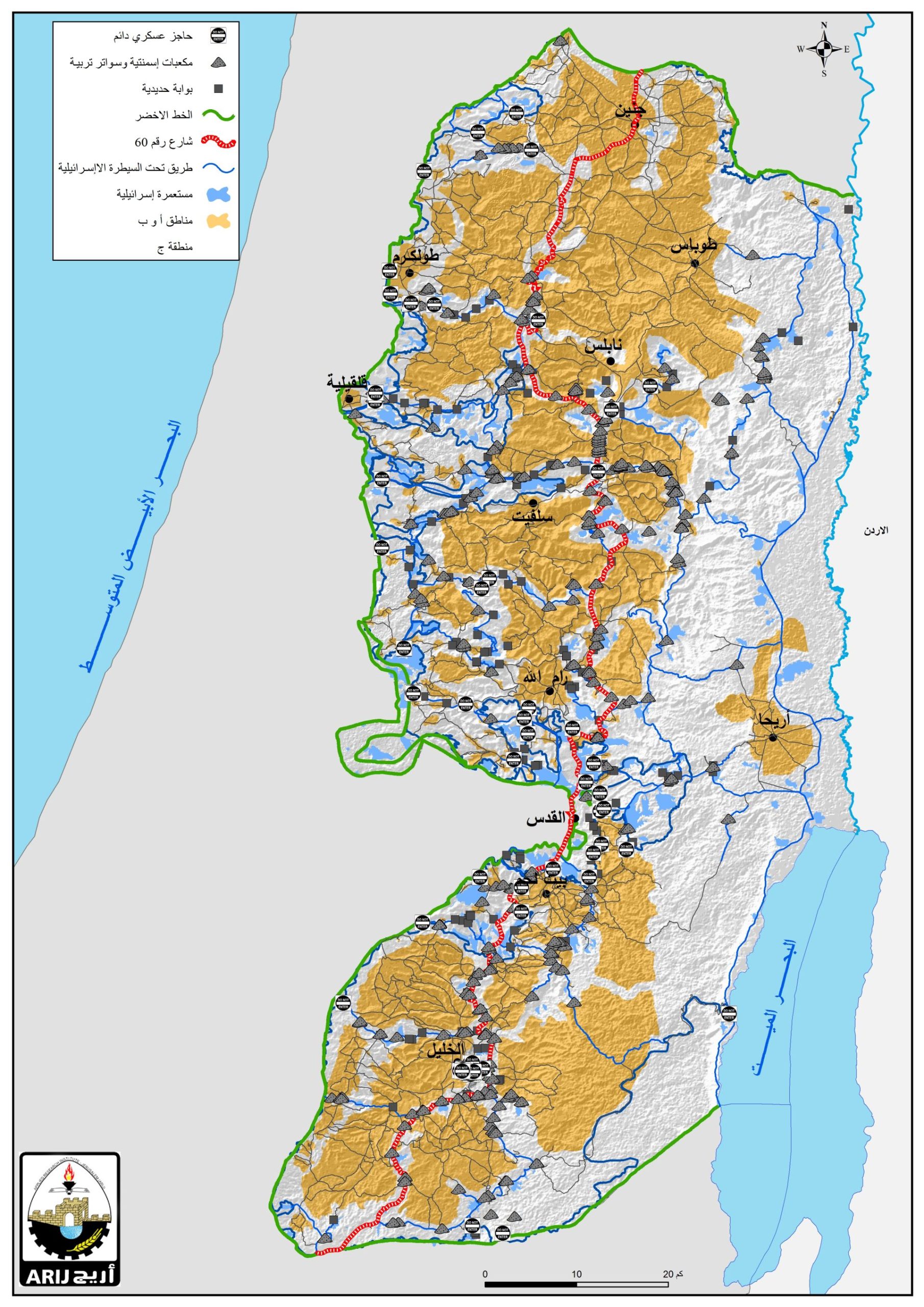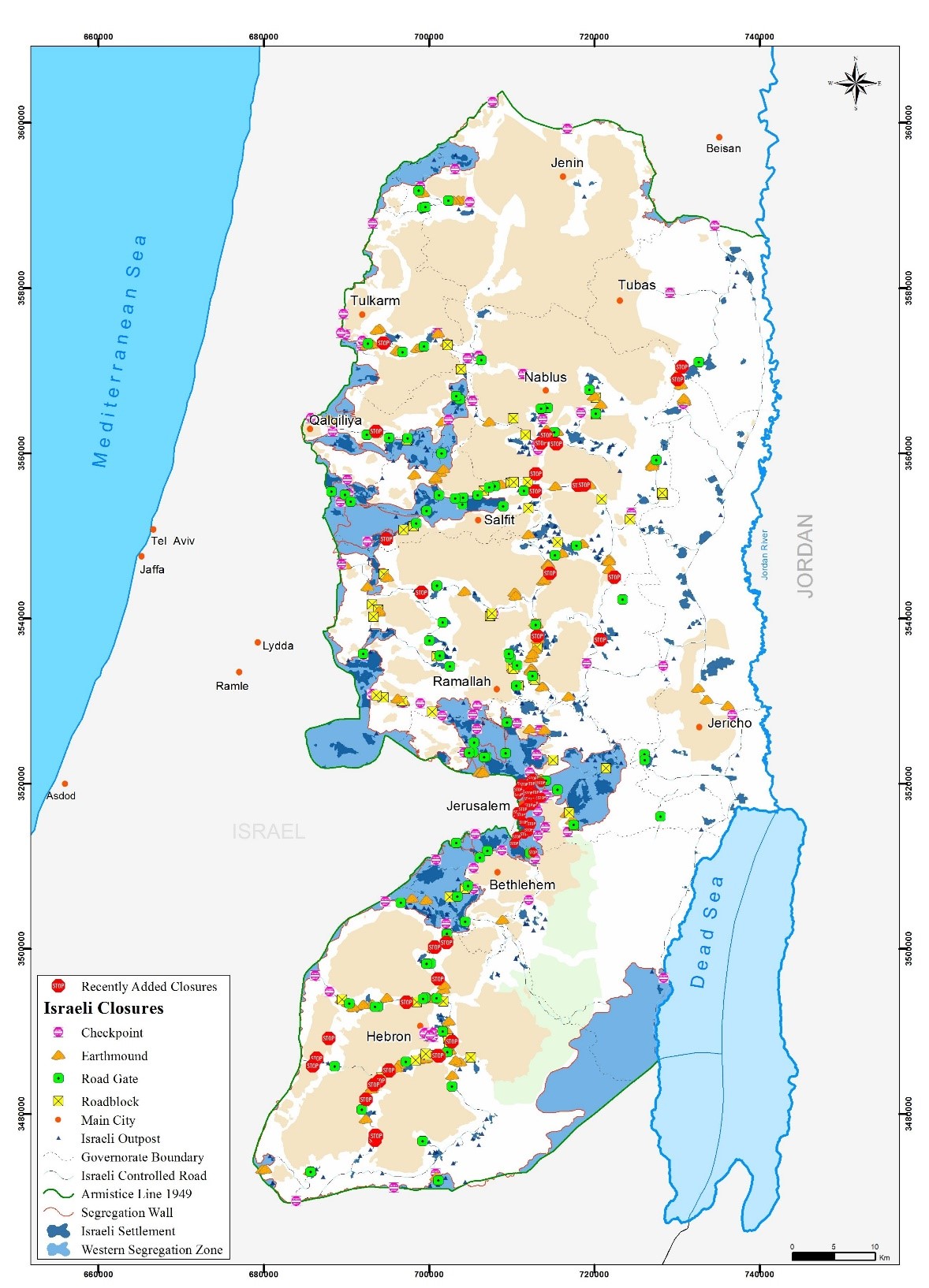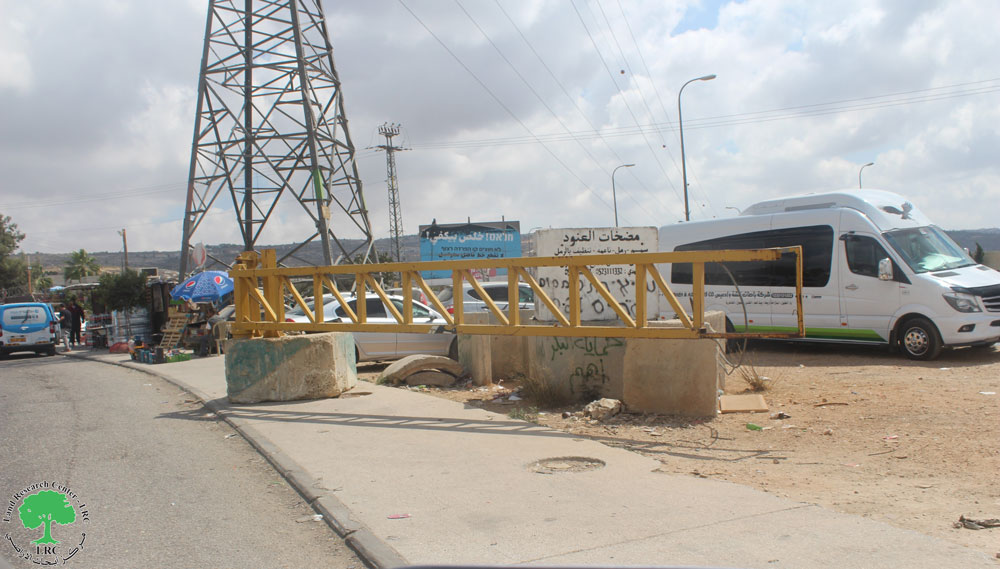According to international observers, Israel constrains the West Bank territory with 567 various types of obstacles; 77 of which are main checkpoints and partial checkpoints that control movement between Palestinian governorates, access to Jerusalem and beyond the Green Line. In fact, Israel coordinated its hold of the obstacle regime system with their control over the road system to uphold their grip over the West Bank territory in every possible aspect.
In light of the Israeli infuriated war on Gaza, Israel initiated its long planned apartheid road system, which entails the total separation of road use. Two networks of roads were established: one for the Palestinians that involves the traditional worn out roads between the Palestinian cities and another highly constructed network of bypass roads to eventually be used by the Israeli settlers in the occupied Palestinian territory (oPt).
Today, the length of bypass roads in the oPt exceeds 980 km aimed to facilitate the Israeli settlers’ movement and simultaneous control, even command the Palestinians’ movement between the main cities. Currently, at least to the time of the Gaza war, the movement for Palestinians was sanctioned on most of the bypass roads with the exception of some parts of bypass road 60 within East Jerusalem. Subsequent to the Gaza war, reports of incidents where the Israeli Army is forcibly discoursing Palestinians from Huwara road (south of Nablus) and parts of bypass road 60 (between Bethlehem and Hebron) to alternative routes is now undergoing with even “legal” ramifications. Such actions only bring to memory similar strokes that occurred for a considerable period of time during the second Intifada when the Israeli Army denied Palestinians the right to travel on bypass road 90 along the Jordan Valley area (170 km), bypass road 55 between Qalqiylia and Nablus governorates (22 km), bypass road 443 north-west of Ramallah governorate (25 km). This course of action affected the lives and livelihood of tens of thousands of Palestinians across the West Bank territory. It is likely that Israel may very well apply such an apartheid system in coming weeks or months and systemized it as a permanent regime.
However, that is on the main cities’ outskirts. The Israeli Army adopted similar, even more excessive procedures within Palestinian governorates as well. Currently, or at least until October 6, the obstacles set up within the Palestinian governorates were 490 (as reported by international observers). Since then, Israel charged obstacles (earthmounds, roadblocks, iron gates) between Palestinian communities within the governorates. After the war on Gaza, the road obstacles increased by more than 140, mainly on the rural dirt roads and between the towns and communities.
The 3.2 million West Bank residents are stuck, even turned to hostages by Israel made it extremely challenging to travel within the territory or to the outside world, in fact their one and only to Jordan. Even more, the Israeli blockade on the West Bank residents compromised their food stock, medical supply, education and health systems and under-minded the economic sector.
Prepared by:
The Applied Research Institute – Jerusalem














